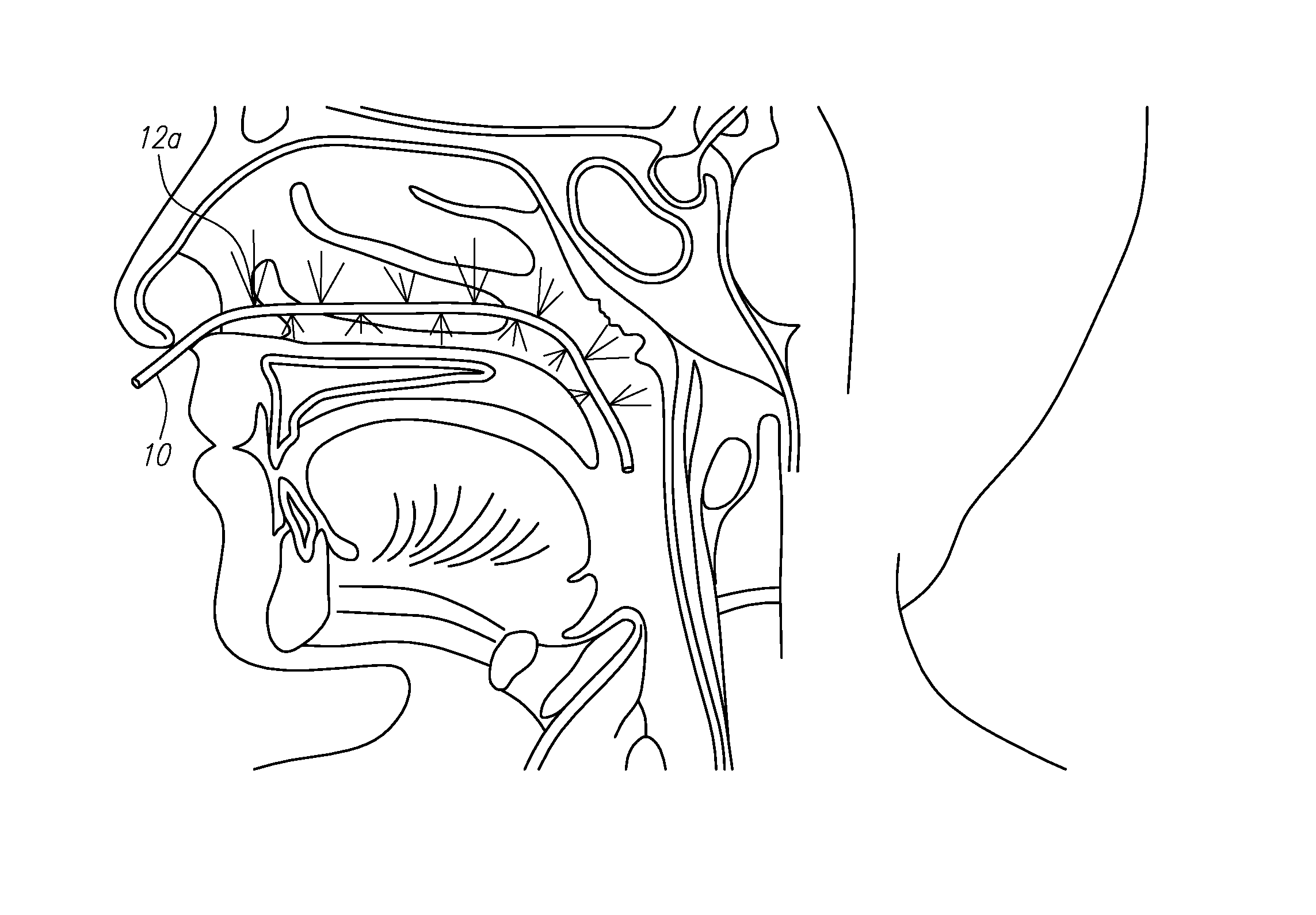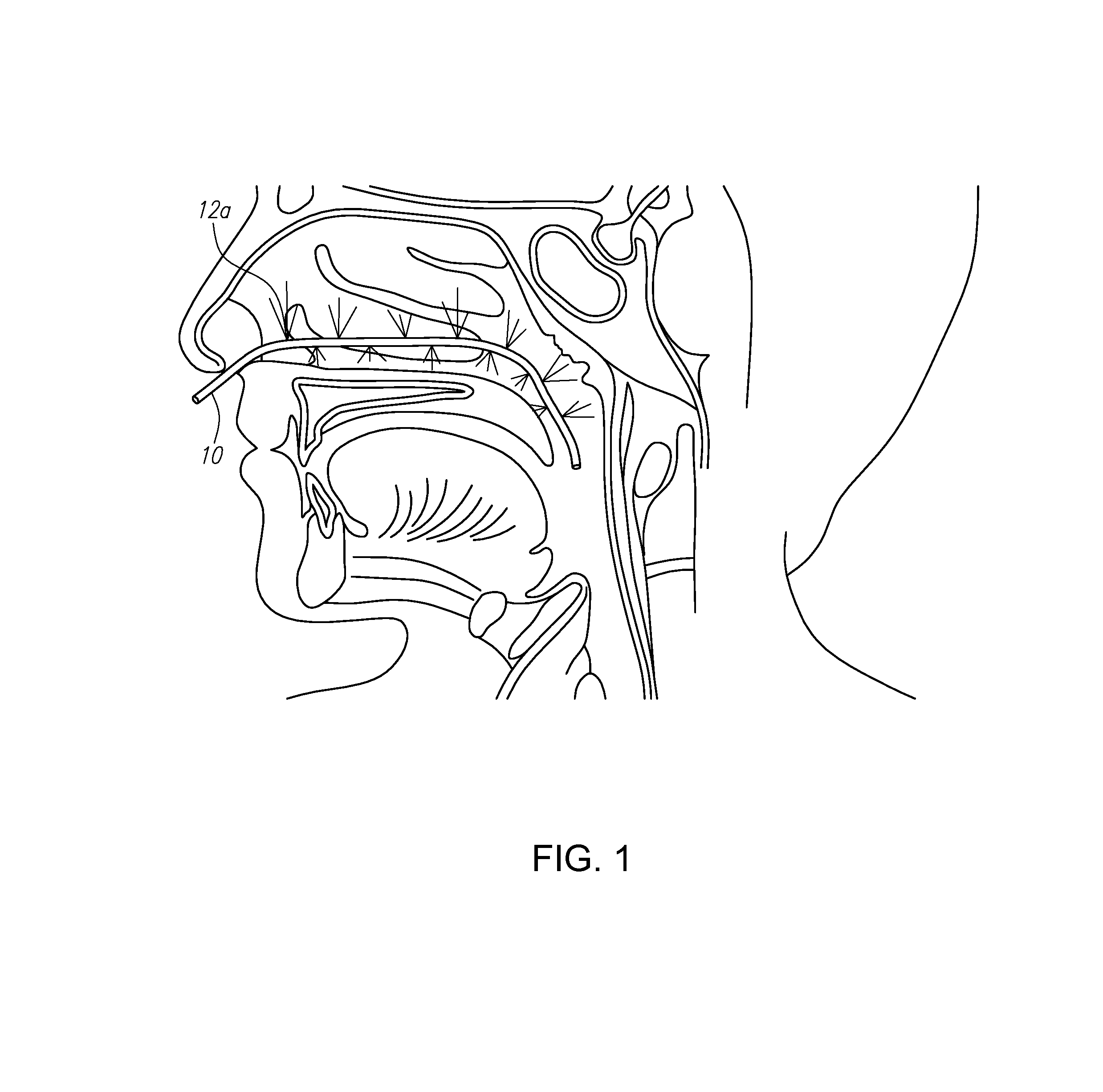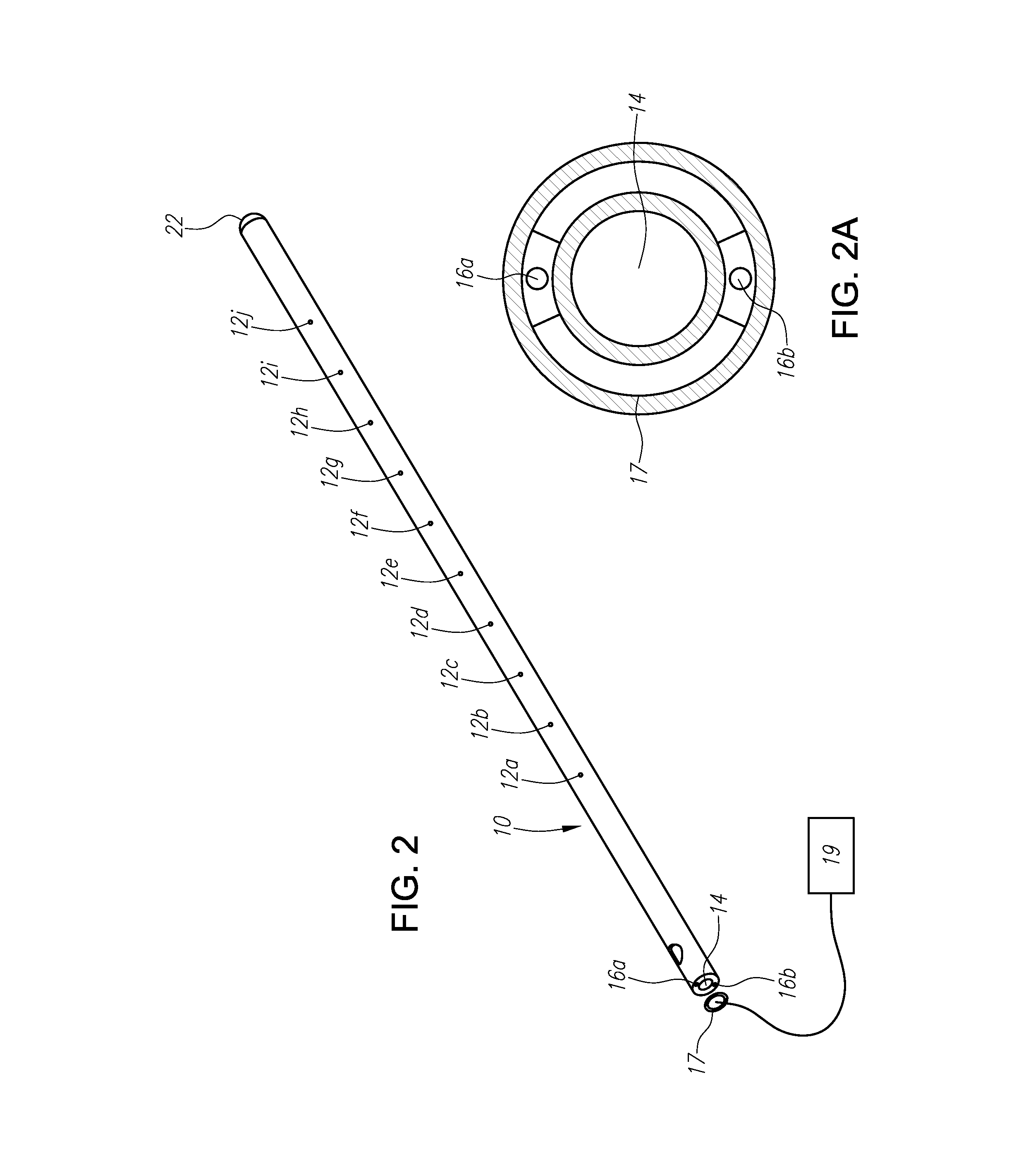Methods and devices for non-invasive cerebral and systemic cooling alternating liquid mist/gas for induction and gas for maintenance
a non-invasive, cerebral and systemic cooling technology, applied in the direction of contraceptive devices, respirators, catheters, etc., can solve the problems of severe cardiac performance depression, neurological deficit to irreversible damage, patients experiencing cerebral ischemia often suffering from disabilities, etc., to reduce cerebral perfusion, minimize neurologic deficits, and maximize cooling
- Summary
- Abstract
- Description
- Claims
- Application Information
AI Technical Summary
Benefits of technology
Problems solved by technology
Method used
Image
Examples
Embodiment Construction
Evaporative Cooling in the Nasal Cavity
[0094]Targeted cerebral cooling via cooling of the nasal and or oral cavities is possible because of the both direct heat transfer due to the proximity of the brain and hematogenous cooling through the carotids as they pass by the oropharynx and through the Circle of Willis, which lies millimeter away from the pharynx. The direct cooling is obtained through evaporative heat loss in the nasal cavity. The evaporative heat loss in the nasal cavity further results in convective cooling of the brain and eventually core body temperature.
[0095]Evaporative heat loss in the nasal cavity can be achieved by spraying high volume air, or any other suitable substantially dry gas, into the patient's nasal cavity to evaporate the naturally occurring fluid in the nasal cavity. Such forced evaporative cooling. is minimally invasive and can be done without the need for airway protection in a non-medical or field setting. Alternatively, delivering and evaporating ...
PUM
| Property | Measurement | Unit |
|---|---|---|
| temperature | aaaaa | aaaaa |
| temperature | aaaaa | aaaaa |
| temperature | aaaaa | aaaaa |
Abstract
Description
Claims
Application Information
 Login to View More
Login to View More - R&D
- Intellectual Property
- Life Sciences
- Materials
- Tech Scout
- Unparalleled Data Quality
- Higher Quality Content
- 60% Fewer Hallucinations
Browse by: Latest US Patents, China's latest patents, Technical Efficacy Thesaurus, Application Domain, Technology Topic, Popular Technical Reports.
© 2025 PatSnap. All rights reserved.Legal|Privacy policy|Modern Slavery Act Transparency Statement|Sitemap|About US| Contact US: help@patsnap.com



